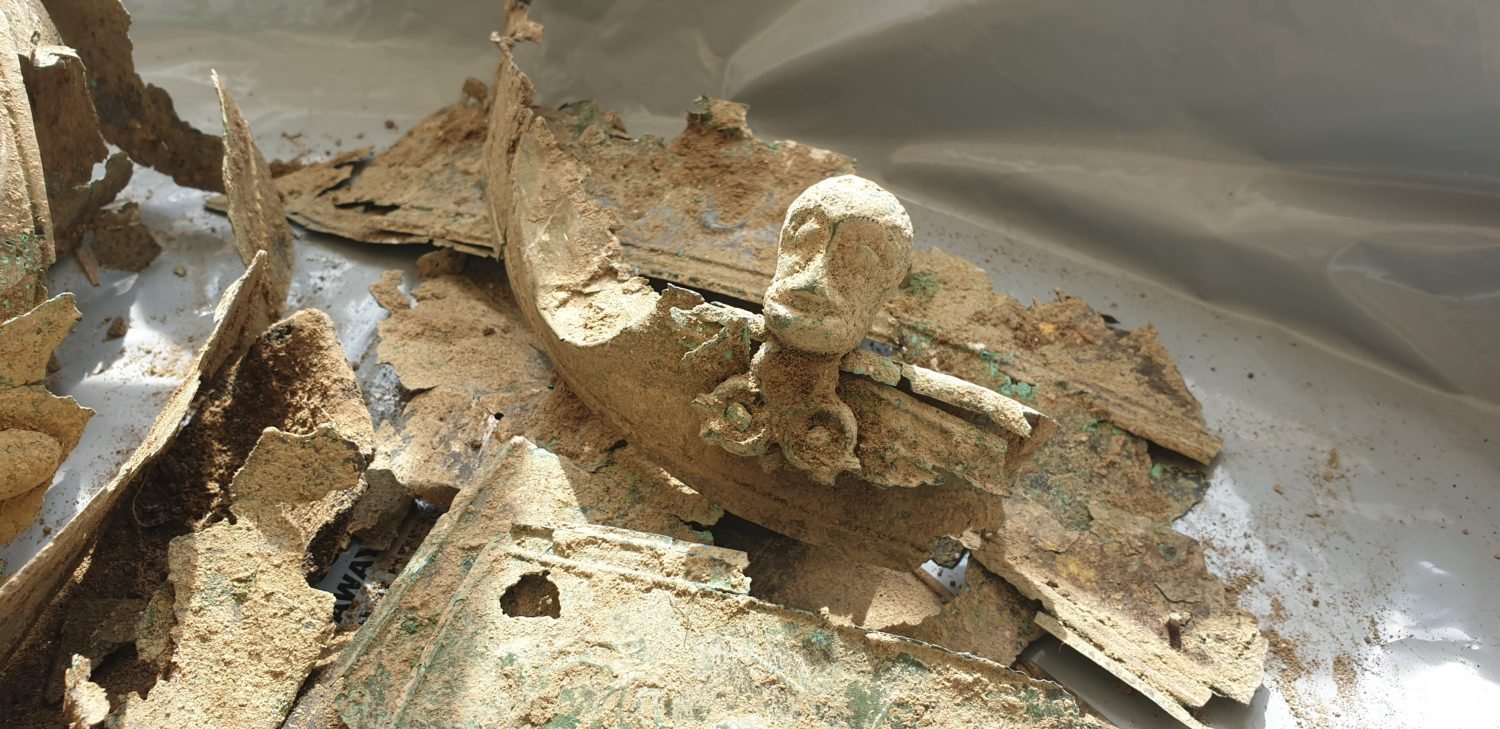
As more people around the world are shuttered indoors, those lucky enough to have a backyard might want to consider taking up metal detecting.
Members of the UK public uncovered a record number of historic discoveries last year, according to a new report from the British Museum.Amateur treasure hunters registered a whopping total of 81,602 finds with the British Museum’s portable antiquities program in 2019, including some 1,311 high value pieces of treasure.
“These discoveries by the public are vital for advancing our understanding of Britain’s diverse history,” British Museum director Hartwig Fischer says in a statement. Fischer added that it is “incredibly encouraging” that so many finds were recorded voluntarily with the museum.
Official “treasure” is generally defined as gold and silver objects that are more than 300 years old, as well as groups of coins and prehistoric metalwork. Among the most significant discoveries is a medieval brooch uncovered after a dump truck made a delivery of soil in Norfolk. The rare 1,100-year-old brooch was found in an excellent state of preservation.
Early Medieval silver and niello brooch from Great Dunham, Norfolk c. AD 800 – 900. ©The Trustees of the British Museum.
Elsewhere, someone uncovered an Iron Age drinking set in Kent. The 2,000-year-old set of vessels included a bucket decorated with mythical creatures and a strange humanoid face.
Other treasures include Roman coins and Bronze Age jewelry. Nearly all of the items—some 90 percent—were discovered by metal detectorists. The new report also highlights that 399 of the 1,266 treasure finds that were reported in 2017 have been acquired by museums, 92 percent of which were local museums.
“I am very pleased that a record number of treasure finds have been unearthed and it is brilliant that they will now go on display in local museums across the country,” Caroline Dinenage, the UK’s minister of state for digital and culture, says in a statement. “Each one of these valuable discoveries tells us more about the way our ancestors lived and I want to congratulate all those who played a part in helping uncover more about our shared history.”
See more images of the astonishing discoveries below.
Copper alloy fitting from bucket, in the shape of a human face, from Lenham, Kent. Iron Age c.50 BC. ©The Trustees of the British Museum.
Copper alloy radiate coin of Emperor Carausius from Headbourne Worthy, Hampshire. Roman Britain AD 286 – 293. ©The Trustees of the British Museum.
Gold arm ring from St Bees, Cumbria. Bronze Age c. 900 – 700 BC. ©The Trustees of the British Museum.